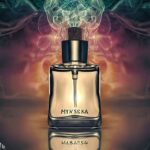Places to visit in France for Perfume lovers
France is known worldwide as a hub for perfumery, and there are several cities and regions within the country that offer fantastic experiences for perfume enthusiasts. Here are some of the best places to visit in France for perfume-related experiences:
- Grasse: Grasse, located in the Provence-Alpes-Côte d’Azur region of southern France, is often referred to as the perfume capital of the world. It has a long history of perfume production and is home to several famous perfume houses, including Fragonard, Galimard, and Molinard. Visitors can explore perfume factories, take guided tours to learn about the perfume-making process, and even create their custom fragrances.
- Paris: The capital city of France is home to numerous iconic perfume boutiques and fragrance museums. Places like the Guerlain flagship boutique on the Champs-Élysées or the Serge Lutens Palais Royal boutique offer a chance to explore and purchase high-quality perfumes. You can also visit the Museum of Perfume (Musée du Parfum) in Paris to learn about the history and art of perfumery.
- Eze: Eze is a charming village in the French Riviera that’s known for its breathtaking views and artisanal perfume shops. The most famous is the Fragonard Perfume Factory, where you can take a guided tour and learn about the perfume-making process. Eze is a beautiful place to explore while immersing yourself in the world of fragrance.
- Côte d’Azur: The French Riviera, or Côte d’Azur, is a region known for its natural beauty and luxury. Many high-end perfume brands have their roots in this area. Consider visiting perfumeries like Dior in Grasse, or exploring boutiques in cities like Nice, Cannes, or Saint-Tropez, where you can find exclusive fragrances.
- Versailles: While primarily known for the Palace of Versailles, this historic city also has its perfume connection. The Osmothèque in Versailles is a perfume archive and museum that houses an extensive collection of historic fragrances. Although it’s not a commercial perfume destination, it offers a unique insight into the history of perfumery.
- Burgundy: The region of Burgundy, famous for its wines, is also home to some boutique perfumeries. The charming town of Beaune, for example, has several artisanal perfumers that you can visit to explore unique fragrances.
When visiting these places, it’s a good idea to check the opening hours and any specific tours or experiences offered by the perfume houses, as they can vary. Additionally, consider trying local scents and fragrances unique to the regions you visit, as they often reflect the local culture and environment.


